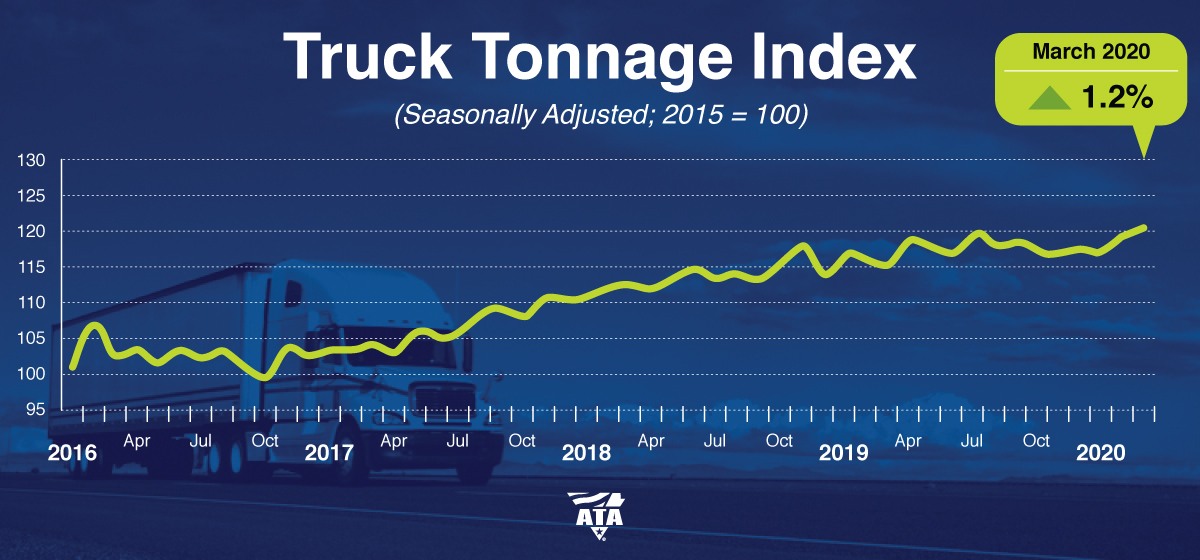Index 4.3% Higher than March 2019

Arlington, Va. — American Trucking Associations’ advanced seasonally adjusted (SA) For-Hire Truck Tonnage Index rose 1.2% in March after increasing 1.8% in February. In March, the index equaled 120.4 (2015=100) compared with 119 in February.
“March was the storm before the calm, especially for carriers hauling consumer staples, which experienced strong freight levels,” said ATA Chief Economist Bob Costello. “But there was a huge divergence among freight types. While freight to grocery stores and big box retailers was strong in March, especially late March, due to surge buying by households, freight was anemic in other supply chains, like that for gasoline, restaurants, and auto factories.
“Because of this, and the continued shuttering of many parts of the economy, I would expect April tonnage to be very soft,” he said.
Compared with March 2019, the SA index increased 4.3%, which was preceded by a 2.6% year-over-year gain in February. During the first quarter, the index rose 1.5% compared with the fourth quarter of last year and 2.4% from a year earlier.
The not seasonally adjusted index, which represents the change in tonnage actually hauled by the fleets before any seasonal adjustment, equaled 120.9 in March, 11.8% above the February level (108.2). In calculating the index, 100 represents 2015.
Trucking serves as a barometer of the U.S. economy, representing 71.4% of tonnage carried by all modes of domestic freight transportation, including manufactured and retail goods. Trucks hauled 11.49 billion tons of freight in 2018. Motor carriers collected $796.7 billion, or 80.3% of total revenue earned by all transport modes.
ATA calculates the tonnage index based on surveys from its membership and has been doing so since the 1970s. This is a preliminary figure and subject to change in the final report issued around the 5th day of each month. The report includes month-to-month and year-over-year results, relevant economic comparisons, and key financial indicators.